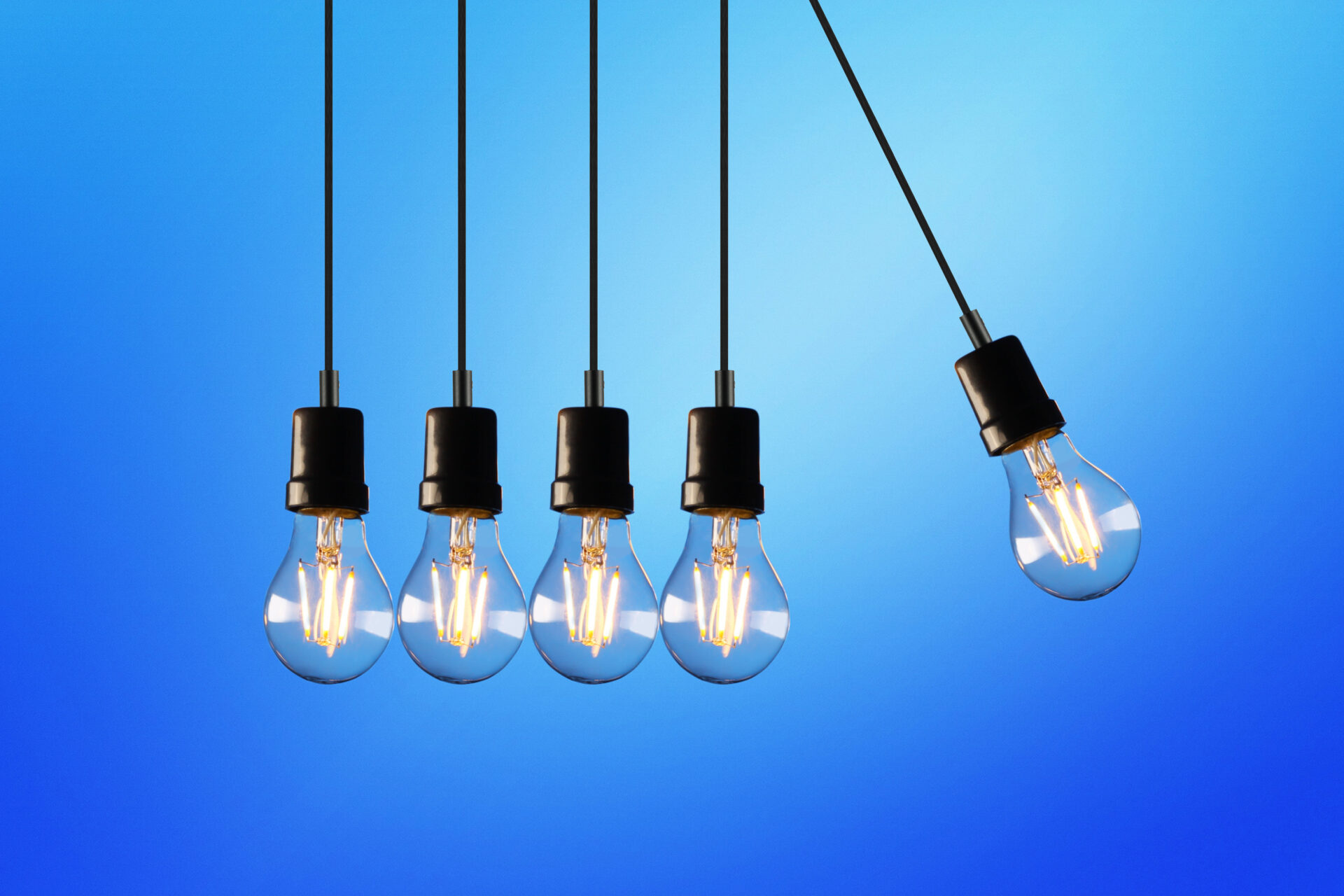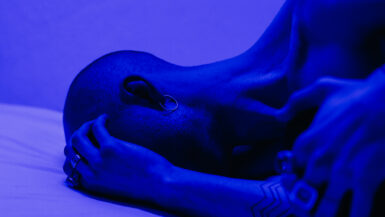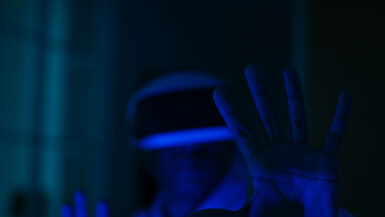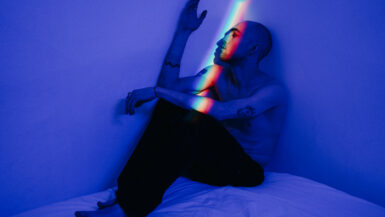As our lives become increasingly intertwined with technology, it is essential for parents to understand the potential repercussions on their children’s sleep and productivity. One of the primary concerns is the impact of blue light, emitted from digital devices such as smartphones, tablets, and computer screens. In this comprehensive article, we will delve into the science behind blue light and its effects on sleep, explore its implications on cognitive performance and overall well-being, and offer practical advice for parents seeking to mitigate the adverse consequences. By fostering awareness and equipping parents with effective strategies, we aim to promote healthy digital habits for the entire family.
Creating a Sleep-Friendly Environment for Children
In order to help children achieve a better night’s sleep and limit the potential negative effects of blue light exposure, it is crucial to establish a sleep-friendly environment. This includes implementing routines and habits that encourage relaxation and restfulness, as well as minimizing the presence of digital devices in the bedroom. In this section, we will discuss several strategies to create an optimal sleep setting for your little ones.
Establishing a Bedtime Routine
A consistent bedtime routine can signal to children that it’s time to wind down and prepare for sleep. This may include activities such as reading a book, taking a warm bath, or engaging in calming exercises like deep breathing or gentle stretching. By incorporating these relaxing practices into your child’s nightly schedule, you can help them to transition more smoothly into a restful slumber.
Reducing Exposure to Blue Light Before Bed
As we have learned from the article about How Blue Light Affects Sleep and Immune Function, it is essential to limit blue light exposure in the hours leading up to bedtime. Encourage your child to avoid using digital devices, such as smartphones and tablets, at least one hour before sleep. Alternatively, you can invest in blue light blocking glasses or install screen filters on devices to help reduce the impact of blue light on your child’s sleep.
Creating a Calm and Comfortable Sleep Space
A child’s bedroom should be a sanctuary that promotes relaxation and tranquility. Ensure that the room is cool, quiet, and dark to optimize sleep quality. You may also want to consider incorporating elements such as blackout curtains, white noise machines, or soothing scents like lavender to create a more peaceful atmosphere.
Encouraging Regular Physical Activity
Regular physical activity is not only essential for overall health and well-being, but it can also help to improve sleep quality. Encourage your child to engage in age-appropriate exercise during the day to promote better rest at night. However, be mindful of the timing, as exercising too close to bedtime may energize them and make it more difficult to fall asleep.
By implementing these strategies and fostering a sleep-friendly environment, parents can take proactive steps to help their children achieve better quality sleep and reduce the potential negative impacts of blue light exposure. This will not only contribute to improved cognitive performance and overall health but also lay the foundation for a lifetime of healthy sleep habits.
The Connection between Sleep and Productivity
The role sleep plays in our lives cannot be overstated, particularly when it comes to cognitive performance and productivity. In this section, we will explore the science behind the relationship between sleep and productivity, and how the exposure to blue light can influence this delicate balance. By understanding these connections, parents can help their children develop healthy habits that promote both restful sleep and optimal productivity.
The Science of Sleep and Cognitive Performance
Sleep is a critical component of our overall health, and its impact on cognitive functioning is particularly noteworthy. Numerous studies have shown that a lack of quality sleep can lead to impaired memory, reduced attention span, and decreased problem-solving abilities. On the other hand, well-rested individuals typically demonstrate improved focus, creativity, and decision-making skills.
During sleep, our brains undergo essential processes such as memory consolidation, which allows us to retain and organize information more effectively. Additionally, the brain clears out harmful toxins and waste products during sleep, further contributing to optimal cognitive performance upon waking.
How Blue Light Affects Sleep and Productivity
As we have discussed earlier in this article, exposure to blue light from digital devices can interfere with the production of melatonin, the hormone responsible for regulating sleep. This can result in difficulties falling asleep, staying asleep, or achieving restorative sleep. Consequently, a lack of quality sleep can directly impact a child’s cognitive performance and productivity during waking hours.
For instance, a child who has not received sufficient sleep due to blue light exposure may struggle to maintain focus during school, leading to decreased academic performance. Furthermore, their ability to process and retain new information may be compromised, making it more challenging to learn and develop new skills.
Helping Children Achieve a Balance between Sleep and Productivity
In order to help children maintain a healthy balance between sleep and productivity, parents must be proactive in managing their exposure to blue light. This may involve setting boundaries around screen time, particularly in the evening hours, and encouraging the use of blue light filtering tools on digital devices.
Additionally, promoting healthy sleep habits, as discussed in the previous section, can go a long way in ensuring that children receive adequate rest and are well-equipped to perform at their best during the day.
By taking these steps to minimize the impact of blue light on sleep, parents can play a crucial role in supporting their children’s cognitive development and overall well-being. This will not only pave the way for academic success but also contribute to a healthier and more balanced lifestyle.
Tips for Reducing Blue Light Exposure at Night
As we’ve established, limiting blue light exposure at night is essential for promoting healthy sleep patterns in children. In this section, we will explore practical tips for parents seeking to minimize their child’s exposure to blue light before bedtime. By implementing these strategies, you can help create a more sleep-friendly environment that supports your child’s cognitive development and overall well-being.
Establish a Digital Curfew
One of the most effective ways to reduce blue light exposure at night is by setting a digital curfew for your child. This means establishing a designated time in the evening when all digital devices are turned off and put away. Ideally, this should be at least one hour before bedtime to allow the body’s natural melatonin production to kick in and prepare for sleep.
Utilize Blue Light Filtering Tools
Many devices now come with built-in blue light filtering options, which can be an invaluable tool in reducing nighttime exposure. Encourage your child to use these features, such as “Night Shift” on Apple devices or “Night Light” on Android devices, as they can help to minimize the impact of blue light on their sleep. Additionally, consider investing in blue light blocking glasses, which can be worn while using devices to further reduce exposure.
Dim the Lights and Create a Relaxing Atmosphere
Lowering the brightness of both the device screens and ambient lighting in the room can help to reduce blue light exposure and create a more calming environment. Swap out bright white light bulbs for warmer, softer lighting options, and encourage your child to use the lowest comfortable screen brightness setting on their devices.
Encourage Alternatives to Screen Time
Instead of relying on digital devices for entertainment in the hours leading up to bedtime, encourage your child to engage in more traditional activities that don’t involve screens. This might include reading physical books, drawing, journaling, or playing board games. By providing alternative options for relaxation, you can help your child create a healthier balance between screen time and sleep.
Model Healthy Behavior
As a parent, one of the most powerful ways to encourage healthy habits in your child is by modeling them yourself. Make an effort to limit your own blue light exposure at night, and engage in the same relaxing activities you are encouraging your child to participate in. By setting an example, you can foster a family culture that prioritizes sleep and well-being.
By implementing these tips and proactively managing blue light exposure, parents can help create an environment that supports healthy sleep patterns for their children. In turn, this will contribute to improved cognitive function, academic performance, and overall well-being, setting your child up for success both in and out of the classroom.
How Blue Light Affects Sleep Patterns
Understanding the link between blue light exposure and sleep patterns is crucial for parents who want to ensure their children’s well-being. In this subsection, we will delve into the science behind how blue light can disrupt sleep patterns and discuss the potential consequences of prolonged exposure to blue light, particularly in the evening hours.
The Science Behind Blue Light and Sleep
Blue light is a part of the visible light spectrum with a wavelength of approximately 480 nm. It is emitted by the sun, as well as artificial sources such as LED lights and electronic devices like smartphones, tablets, and computer screens. While blue light can have positive effects during the daytime, it can be detrimental to our sleep patterns when experienced in the evening or at night.
The reason behind this lies in our body’s internal clock, known as the circadian rhythm. This natural timekeeper regulates various physiological processes, including our sleep-wake cycle. Exposure to blue light influences the circadian rhythm by suppressing the production of melatonin, a hormone responsible for inducing sleepiness.
Melatonin Suppression and Its Consequences
When our eyes are exposed to blue light, the brain’s pineal gland produces less melatonin, leading to a delay in the onset of sleepiness. This can result in difficulty falling asleep, shorter sleep duration, and reduced sleep quality. In children, the consequences of disrupted sleep can be even more pronounced, as sleep plays a vital role in their physical and cognitive development.
Prolonged exposure to blue light, especially close to bedtime, can lead to a chronic disruption of sleep patterns. This can have a ripple effect on various aspects of a child’s life, including their academic performance, mood, and overall health.
Individual Differences in Sensitivity to Blue Light
It is essential to recognize that sensitivity to blue light can vary from one individual to another. Factors such as age, genetics, and personal habits can influence the degree to which blue light affects a person’s sleep patterns. For example, younger children tend to have larger pupils and clearer lenses, making their eyes more sensitive to the effects of blue light. Understanding your child’s unique sensitivity to blue light can help you tailor strategies to protect their sleep patterns and overall well-being.
Minimizing the Impact of Blue Light on Sleep
Armed with the knowledge of how blue light affects sleep patterns, parents can take proactive steps to mitigate its impact on their children. This may involve setting boundaries around screen time, particularly in the evening hours, and encouraging the use of blue light filtering tools on digital devices. Additionally, promoting healthy sleep habits and creating a sleep-friendly environment can go a long way in ensuring that children receive adequate rest and are well-equipped to perform at their best during the day.
By recognizing the influence of blue light on sleep patterns and taking appropriate measures to minimize exposure, parents can play a crucial role in supporting their children’s cognitive development and overall well-being. This will not only pave the way for academic success but also contribute to a healthier and more balanced lifestyle.
Understanding Blue Light and Its Sources
In this subsection, we will explore the nature of blue light, its sources, and how it differs from other types of light. By gaining a deeper understanding of blue light, parents can be better equipped to manage their children’s exposure and create an environment that supports healthy sleep habits and overall well-being.
Defining Blue Light: A Part of the Visible Light Spectrum
Blue light is a component of the visible light spectrum, which consists of various colors that can be seen by the human eye. These colors range from violet to red, with each color corresponding to a specific wavelength. Blue light falls within the range of 400-495 nanometers (nm), making it one of the shorter-wavelength colors on the spectrum. It is important to note that blue light is not inherently harmful; in fact, it plays a crucial role in regulating our circadian rhythms and even has some positive effects on mood and alertness during daytime hours. However, excessive exposure to blue light, particularly in the evening, can interfere with sleep patterns and have negative consequences on our health.
Natural and Artificial Sources of Blue Light
Blue light is emitted from both natural and artificial sources. The primary natural source of blue light is the sun, which provides us with the full spectrum of visible light during daylight hours. The blue light from the sun helps to regulate our sleep-wake cycles and is essential for maintaining good health.
In addition to the sun, numerous artificial sources of blue light exist. These include LED lights and compact fluorescent lamps (CFLs), which have become increasingly common in households due to their energy efficiency. Perhaps the most significant source of artificial blue light in our lives comes from digital devices such as smartphones, tablets, computer screens, and televisions. The high-energy blue light emitted from these devices can have a more significant impact on our sleep patterns, particularly when used close to bedtime.
How Blue Light Differs from Other Types of Light
Blue light differs from other types of light primarily due to its shorter wavelength and higher energy levels. While other colors on the visible light spectrum can also impact our circadian rhythms to some extent, blue light has the most significant influence on melatonin production and sleep patterns. This is because the cells in our eyes that regulate the circadian rhythm are most sensitive to blue light.
Moreover, blue light penetrates deeper into the eye compared to other wavelengths, increasing the potential for damage to the retina over time. This is why it is essential for parents to monitor and manage their children’s exposure to blue light, particularly from digital devices.
Strategies for Managing Blue Light Exposure
Armed with the knowledge of blue light and its sources, parents can take proactive steps to manage their children’s exposure and protect their sleep patterns. Some effective strategies include setting boundaries around screen time, particularly in the evening hours, and using blue light filtering tools on digital devices. Encouraging alternative activities that do not involve screens and promoting healthy sleep habits can also contribute to improved sleep quality and overall well-being.
By better understanding the nature of blue light and its sources, parents can make informed decisions about their children’s exposure and take appropriate measures to foster a healthy balance between technology use and sleep. This will not only support their children’s cognitive development and academic success, but also contribute to a more balanced and healthy lifestyle.





Leave a reply